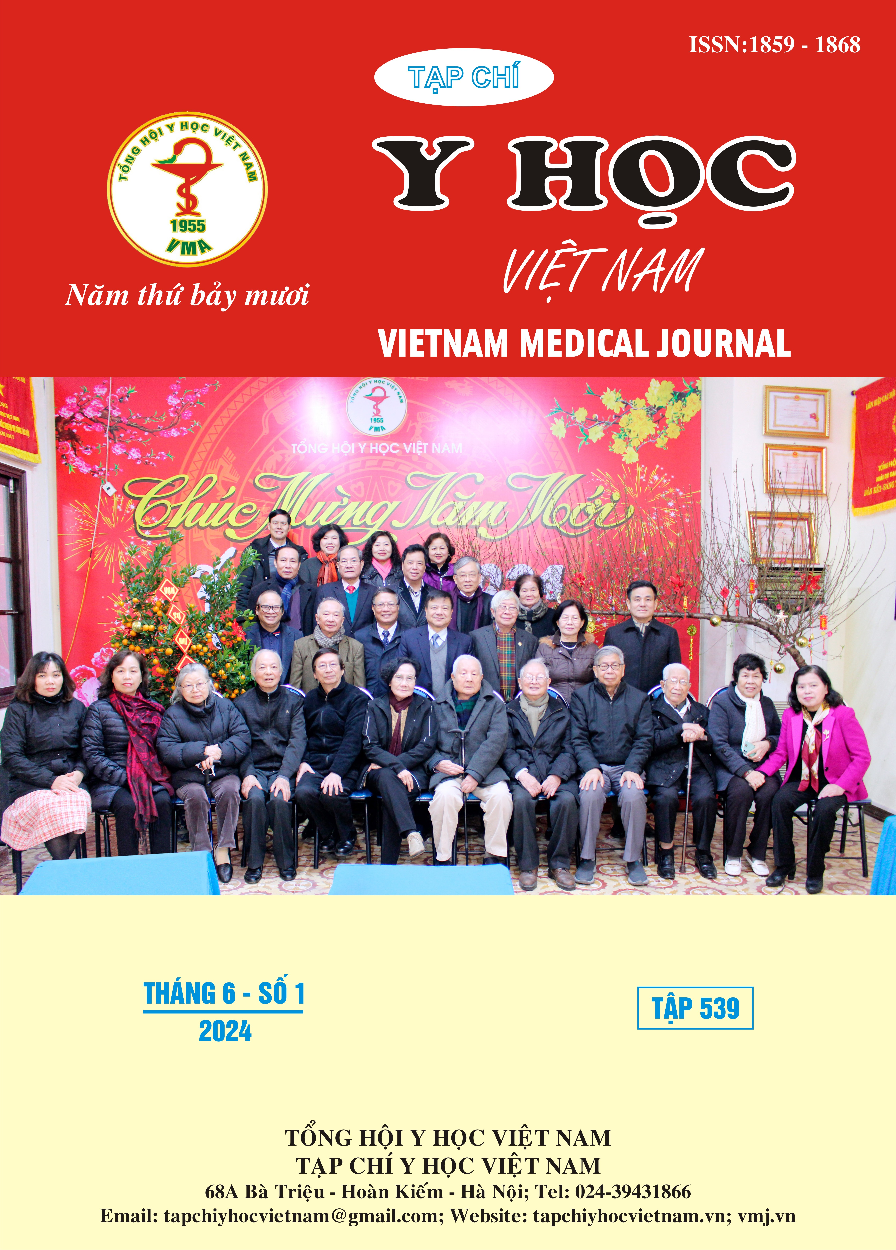MATERNAL AND FETAL OUTCOMES IN PRE-ECLAMPSIA WITHOUT SEVERE FEATURES AT HA NOI OBSTETRICS AND GYNECOLOGY HOSPITAL
Main Article Content
Abstract
Objective: Evaluate obstetric results of pre-eclampsia without severe signs at Hanoi Obstetrics and Gynecology Hospital in 2022. Research subjects and methods: Cross-sectional descriptive study on 125 pre-eclamptic pregnant women coming for examination and treatment at Hanoi Obstetrics and Gynecology Hospital from January 2022 to December 2022. Results: In the group with preeclampsia without severe signs, there were 29 pregnant women (accounting for 23.2%), of which the majority were treated for 2 days (accounting for 55.2%), the longest being 48 days. Of these, there was 1 case of spontaneous labor and 28 cases of pregnancy termination when indicated. The main reason why 28 cases were indicated for CDTK was due to failure of medical treatment. In cases where CDTK is indicated, 96.4% of pregnant women undergo cesarean section; There was only 1 case of vaginal birth, accounting for 3.6%, and no case required forceps intervention during childbirth. Fetal complications are mainly related to low birth weight (<2500g) accounting for 58.6% and prematurity accounting for 27.6%. Conclusion: Preeclampsia is a common disease in the reproductive age group, the group of pregnant women with preeclampsia without severe signs has an average age (30 ± 7). Prenatal management and medical treatment significantly improve obstetric outcomes. Premature birth, fetal growth retardation and low birth weight are common complications for the baby and need to be monitored and managed appropriately in high-risk pregnancies.
Article Details
Keywords
preeclampsia, preeclampsia without severe signs, maternal outcomes, fetal outcomes.
References
2. L. Duley (1992). Maternal mortality associated with hypertensive disorders of pregnancy in Africa, Asia, Latin America and the Caribbean. Br J Obstet Gynaecol, 99 (7), 547-553.
3. Lutfi S, Allen V.M, Fahey J et al (2004). Twin-twin transfusion syndrome: a population-based study. Obstet Gynecol, 104 (6), 1289-1297.
4. G. M. F. Fikadu K, Getahun F, Chufamo N, Misiker D (2020). Family history of chronic illness, preterm gestational age and smoking exposure before pregnancy increases the probability of preeclampsia in Omo district in southern Ethiopia: a case-control study. Clin Hypertens. 2020;26:16. doi:10.1186/s40885-020-00149-9.
5. T. L. G. Trương (2022). NGHIÊN CỨU GIÁ TRỊ CỦA SIÊU ÂM DOPPLER TRONG TIÊN LƯỢNG TÌNH TRẠNG SỨC KHỎE CỦA THAI Ở THAI PHỤ TIỀN SẢN GIẬT. Tạp chí Điện quang & Y học hạt nhân Việt Nam, (29), 48-48.
6. E. M. Kooffreh M.E, Ekpoudom D.O (2020). The prevalence of pre- eclampsia among women in the university of Calabar teaching hospital. Saudi journal for health sciences, 3(3), 133-136.,
7. B. M. Sibai (2005). Diagnosis, prevention, and management of eclampsia. Obstet Gynecol, 105 (2), 402-410.
8. Bệnh viện Từ Dũ Sở Y tế Thành phố Hồ Chí Minh (2015), Phác đồ điều trị sản phụ khoa, Nhà xuất bản Thanh Niên.
9. F. T. watanabee N, Suzuki T, et al. (2014,). Is in vitro fertilization asociated with preeclampsia? A propensity score matched study. BMC prenancy childbirth 2014; 14:69-69.
10. S. Noor, M. Halimi, N. R. Faiz et al (2004). Magnesium sulphate in the prophylaxis and treatment of eclampsia. J Ayub Med Coll Abbottabad, 16 (2), 50-54.


